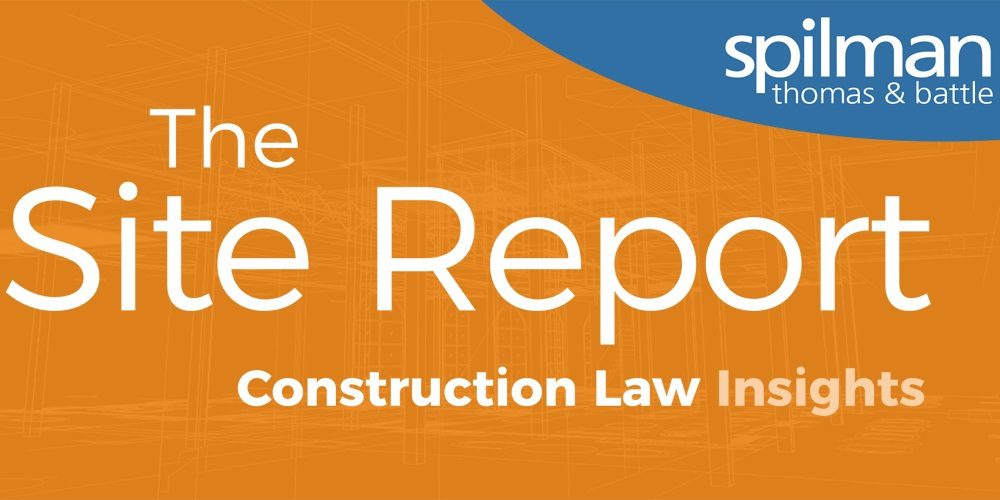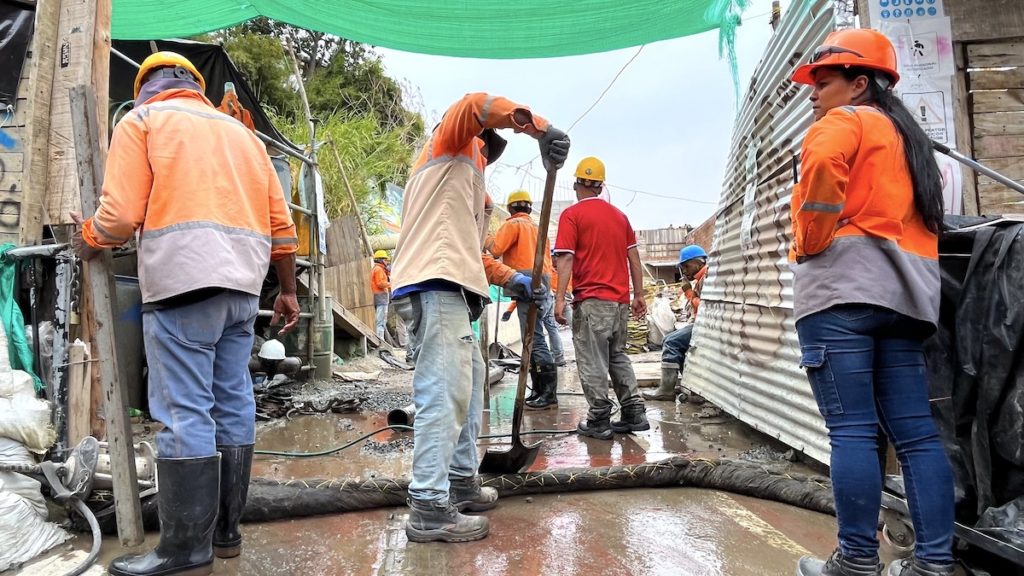In-situ baseline calibration approach for enhanced data quality of large-scale air sensor monitoring networks – Nature

Executive Summary: An In-Situ Calibration Approach for Sustainable Air Quality Monitoring
Effective air quality monitoring is fundamental to achieving several Sustainable Development Goals (SDGs), particularly SDG 3 (Good Health and Well-being) and SDG 11 (Sustainable Cities and Communities). However, the proliferation of large-scale sensor networks is hampered by the operational and financial unsustainability of conventional calibration methods. This report details a novel in-situ baseline calibration method (b-SBS) designed to overcome these challenges. The b-SBS approach facilitates remote calibration of entire sensor networks without requiring costly and labor-intensive co-location with reference monitors. This innovation in monitoring infrastructure directly supports SDG 9 (Industry, Innovation, and Infrastructure) by providing a scalable, cost-effective solution.
Based on extensive field tests of electrochemical sensors for NO₂, NO, CO, and O₃, the study establishes that sensor sensitivity is highly consistent across large batches, allowing for the use of a universal parameter. In contrast, sensor baseline drift, while requiring individual calibration, was found to be stable over extended periods, permitting a semi-annual recalibration cycle. Application of the b-SBS method to a 73-sensor NO₂ network in Shanghai demonstrated a significant enhancement in data quality, with the median R² increasing by 45.8% and the Root Mean Square Error (RMSE) decreasing by 52.6%. This improved data accuracy provides a robust foundation for urban planning and public health interventions, advancing the agenda for sustainable urban development.
Introduction: Aligning Air Quality Monitoring with Sustainable Development Goals
The Challenge of Scalable Air Quality Monitoring for Urban Health
The ability to generate high-resolution air pollution data is critical for protecting public health and creating sustainable urban environments, aligning with SDG 3 and SDG 11. While dense networks of low-cost sensors offer a promising solution, their potential is undermined by challenges in data quality assurance. Traditional calibration strategies, which rely on periodic co-location with reference-grade monitors (RGMs), are impractical for large-scale deployments due to their high operational costs and labor requirements. This scalability issue represents a significant barrier to providing the reliable, quantitative data needed to inform policies aimed at reducing air pollution and its health impacts in cities worldwide.
A Novel Calibration Framework for Sustainable Infrastructure (SDG 9)
To address these limitations, this report introduces an in-situ baseline calibration method (b-SBS) as an innovation in sustainable monitoring infrastructure. This approach is grounded in the physical properties of electrochemical sensors and leverages statistical analysis to streamline the calibration process. The core principles of the b-SBS method are:
- Universal Sensitivity: A fixed, empirically derived sensitivity coefficient is applied to all sensors of the same type within a network, leveraging the high consistency observed across large batches.
- Remote Baseline Calibration: Individual sensor baselines are calibrated remotely by leveraging periods of low, spatially homogenous pollutant concentrations, using data from nearby RGMs as a reference.
This framework significantly reduces the need for physical co-location, thereby lowering operational costs and enhancing the scalability and long-term sustainability of air quality monitoring networks.
Methodology: A Framework for Enhanced Data Integrity and Sustainability
Sensor Technology and Testing Protocol
The study utilized Mini Air Station (MAS-AF300) units equipped with electrochemical sensors for NO₂, NO, O₃, and CO. These sensors incorporate dynamic baseline tracking technology to minimize interference from temperature and humidity, ensuring a linear response to pollutant concentrations. The research methodology involved a multi-stage process:
- Analysis of short-term co-location data from 75 sensors in Hong Kong to establish universal sensitivity coefficients.
- Analysis of long-term (8-14 months) co-location data from four sensors to assess baseline drift and determine an optimal, sustainable recalibration frequency.
- Validation of the spatial homogeneity of low-concentration pollutants in Shanghai, a prerequisite for remote calibration.
- Application and validation of the b-SBS method on a 97-sensor network in Shanghai.
- A case study using a 10-sensor sub-network to demonstrate the applicability of calibrated data for local source identification, supporting targeted interventions for SDG 11.
Establishing Universal Sensitivity Coefficients
Analysis of over 100 short-term calibration samples for each gas (NO₂, NO, CO, and O₃) revealed that sensitivity coefficients were highly consistent. This finding supports a key pillar of the b-SBS method: the use of a single, universal sensitivity value for all sensors of a given type. This standardization simplifies network management and contributes to a more efficient and sustainable operational model, aligning with the principles of SDG 9.
Assessing Long-Term Stability and Calibration Frequency
Long-term monitoring is essential for sustainable urban management under SDG 11. The analysis of baseline drift over 8-14 months showed remarkable stability. Key findings include:
- Baseline drift for NO₂, NO, and O₃ remained within ±5 ppb over a six-month period.
- Baseline drift for CO remained within ±100 ppb over a six-month period.
These results indicate that a semi-annual recalibration frequency is sufficient to maintain data accuracy, drastically reducing the maintenance burden and operational costs associated with large-scale, long-term deployments.
Validating Spatial Homogeneity for Remote Calibration
A critical prerequisite for the b-SBS method is the assumption of spatial homogeneity during low-concentration periods. This was validated using data from 61 RGM sites across Shanghai. The analysis confirmed that the 1st percentile (1P) concentrations of NO₂ were highly uniform across the city, with 90% of monthly values remaining below 10 ppb and site-to-site variations typically within 5 ppb. This spatial consistency validates the use of RGM data for remote baseline calibration, providing a reliable foundation for building accurate city-wide monitoring systems essential for SDG 11.
Results: Validating the b-SBS Method for Urban Sustainability
Consistency of Sensor Sensitivity and Performance
The preliminary trials in Hong Kong confirmed the viability of using a universal sensitivity parameter. The coefficients of variation (CV) for the sensitivity of NO₂, NO, O₃, and CO sensors were 15%, 16%, 22%, and 16%, respectively. These low CV values indicate high consistency and support the application of a single median sensitivity value for batch calibration. When the b-SBS method was tested on co-located sensors, its performance was comparable to the traditional, resource-intensive SBS method, with performance differences (R²_diff and RMSE_diff) being minimal across the vast majority of samples.
Performance in a Large-Scale Urban Network (Shanghai Case Study)
The application of the b-SBS method to a network of 73 NO₂ sensors in Shanghai yielded significant improvements in data quality, demonstrating its effectiveness in a real-world urban setting. This enhancement is crucial for providing the reliable data needed for policies supporting SDG 3 and SDG 11.
- The median R² value (compared to nearby RGMs) increased by 45.8%, from 0.48 to 0.70.
- The median RMSE value decreased by 52.6%, from 16.02 ppb to 7.59 ppb.
These results confirm that the b-SBS method can correct for baseline drift that occurs post-deployment, substantially improving the accuracy and reliability of the entire sensor network over time.
Application in Local Source Identification for Targeted Action
To demonstrate the practical utility of the calibrated data, a case study was conducted in a Shanghai port area, a known pollution hotspot. By analyzing data from a 10-sensor sub-network, it was possible to identify specific local emission sources, such as major roads and operational area entrances. This hyper-local insight enables targeted interventions to mitigate pollution, directly contributing to healthier local environments (SDG 3) and the development of more sustainable port infrastructure and urban planning (SDG 11).
Discussion and Implications for Global Goals
Advancing Sustainable Monitoring Infrastructure (SDG 9 & 11)
The b-SBS method represents a significant advancement in air quality monitoring technology. Unlike complex machine learning models that require frequent retraining, the b-SBS framework is physically interpretable, scalable, and cost-effective. By reducing reliance on labor-intensive co-location, it makes large-scale, high-density monitoring networks financially and operationally feasible, thus promoting the development of resilient and sustainable infrastructure for cities.
Enhancing Public Health and Urban Planning (SDG 3 & 11)
The improved data accuracy achieved through the b-SBS method has direct implications for public health and urban sustainability. Reliable, high-resolution data allows city planners and policymakers to:
- Identify pollution hotspots with greater precision.
- Assess the effectiveness of environmental regulations and traffic management strategies.
- Develop evidence-based policies to reduce population exposure to harmful pollutants.
- Inform urban design to create healthier living and working environments.
Limitations and Future Directions for Global Application
While promising, the study acknowledges certain limitations. The framework’s direct applicability may vary for different sensor types, and its accuracy in real-time applications across diverse urban topographies requires further validation. Future research should focus on adapting the method for other pollutants and sensor technologies and exploring hybrid calibration strategies to address long-term sensor aging. Such continuous innovation is vital for developing globally applicable tools to help nations achieve their commitments under the SDGs, fostering partnerships for this shared goal (SDG 17).
Conclusion: A Scalable Solution for a Sustainable Future
This report has presented and validated an in-situ baseline calibration (b-SBS) method that enhances the data quality of large-scale air sensor networks in a cost-effective and scalable manner. By establishing the consistency of sensor sensitivity and the stability of baseline drift, the study provides a practical framework that significantly reduces operational overheads. The successful application in Shanghai demonstrates its potential to transform urban air quality management. This innovation provides cities with a powerful tool to monitor their environment accurately, protect public health, and advance the global agenda for sustainable development as outlined in SDG 3, SDG 9, and SDG 11.
1. Which SDGs are addressed or connected to the issues highlighted in the article?
SDG 3: Good Health and Well-being
The article’s core focus on improving the accuracy of air quality monitoring for pollutants like NO₂, NO, CO, and O₃ directly connects to public health. Air pollution is a major environmental risk to health, and accurately measuring these pollutants is the first step toward managing and mitigating their impact, thereby reducing illnesses and deaths associated with poor air quality.
SDG 9: Industry, Innovation, and Infrastructure
The research introduces an innovative calibration method (b-SBS) that enhances the technological capabilities of air quality monitoring networks. This represents an upgrade to scientific and technological infrastructure. The development of a “cost-effective,” “scalable,” and efficient calibration framework contributes to building resilient and sustainable infrastructure for environmental monitoring.
SDG 11: Sustainable Cities and Communities
The article directly addresses the challenge of monitoring air quality in urban environments, specifically in megacities like Shanghai. By improving the data quality of large-scale sensor networks, the research provides cities with better tools to “pay special attention to air quality” and manage their environmental impact. The case study on source identification in a Shanghai port demonstrates how this technology can help make cities more sustainable and inclusive.
2. What specific targets under those SDGs can be identified based on the article’s content?
-
SDG 3: Good Health and Well-being
- Target 3.9: By 2030, substantially reduce the number of deaths and illnesses from hazardous chemicals and air, water and soil pollution and contamination.
Explanation: The article’s entire premise is to improve the measurement of harmful air pollutants (NO₂, NO, O₃, and CO). Accurate monitoring, as achieved by the proposed b-SBS calibration method, is a prerequisite for creating policies and interventions aimed at reducing population exposure to these pollutants, thus contributing directly to this target.
- Target 3.9: By 2030, substantially reduce the number of deaths and illnesses from hazardous chemicals and air, water and soil pollution and contamination.
-
SDG 9: Industry, Innovation, and Infrastructure
- Target 9.1: Develop quality, reliable, sustainable and resilient infrastructure… to support economic development and human well-being, with a focus on affordable and equitable access for all.
Explanation: The article describes the development of “dense sensor networks for air quality monitoring” as a form of infrastructure. The proposed b-SBS method enhances the quality, reliability, and sustainability of this infrastructure by making it more accurate and “cost-effective,” reducing “operational costs” and the need for “labor-intensive” co-location. - Target 9.5: Enhance scientific research, upgrade the technological capabilities of industrial sectors in all countries… encouraging innovation.
Explanation: The study is a clear example of scientific research leading to a technological upgrade. It proposes a “novel in-situ calibration framework” that improves upon “conventional calibration methods.” This innovation enhances the technological capability of the environmental monitoring sector.
- Target 9.1: Develop quality, reliable, sustainable and resilient infrastructure… to support economic development and human well-being, with a focus on affordable and equitable access for all.
-
SDG 11: Sustainable Cities and Communities
- Target 11.6: By 2030, reduce the adverse per capita environmental impact of cities, including by paying special attention to air quality and municipal and other waste management.
Explanation: The research is explicitly applied to large-scale urban sensor networks in Hong Kong and Shanghai. The goal is to provide “high-resolution spatiotemporal pollution data” to better understand and manage urban air quality. The case study identifying pollution sources in a Shanghai port is a direct application of this technology to reduce the environmental impact of cities.
- Target 11.6: By 2030, reduce the adverse per capita environmental impact of cities, including by paying special attention to air quality and municipal and other waste management.
3. Are there any indicators mentioned or implied in the article that can be used to measure progress towards the identified targets?
-
Indicators for SDG 3 (Target 3.9) and SDG 11 (Target 11.6)
- Concentration levels of specific air pollutants: The article consistently measures the concentration of NO₂, NO, CO, and O₃ in parts per billion (ppb). These measurements are direct indicators for assessing air quality (Indicator 11.6.2: Annual mean levels of fine particulate matter… in cities). The study’s goal is to make these measurements more accurate.
Evidence: “Long-term baseline drift remained stable within ±5 ppb for NO₂, NO, and O₃, and ±100 ppb for CO over 6 months.” - Data on hyper-local pollution sources: The source identification case study uses the calibrated network to pinpoint high-emission areas. This provides data that can be used to measure the effectiveness of targeted pollution reduction efforts.
Evidence: “Bivariate polar plots serve as an effective tool for source characterization, illustrating mean pollutant concentrations across specific wind speed and direction bins.”
- Concentration levels of specific air pollutants: The article consistently measures the concentration of NO₂, NO, CO, and O₃ in parts per billion (ppb). These measurements are direct indicators for assessing air quality (Indicator 11.6.2: Annual mean levels of fine particulate matter… in cities). The study’s goal is to make these measurements more accurate.
-
Indicators for SDG 9 (Targets 9.1 and 9.5)
- Improvement in data accuracy and reliability: The article uses statistical metrics to prove the effectiveness of its innovation. These metrics serve as indicators of the quality and reliability of the monitoring infrastructure.
Evidence: The median R² value “increased by 45.8% (from 0.48 to 0.70), and RMSE decreased by 52.6% (from 16.02 to 7.59 ppb), as validated against nearby reference stations.” - Scalability and cost-effectiveness of technology: The article highlights the new method’s suitability for large networks and its economic benefits, which are indicators of sustainable and efficient infrastructure.
Evidence: The method is described as a “cost-effective solution that reduces operational costs” and its potential for “large-scale deployments” is demonstrated in the Shanghai network of 73 sensors. - Calibration frequency: The stability of the sensors, which determines how often recalibration is needed, is an indicator of the infrastructure’s sustainability and reduced maintenance burden.
Evidence: The analysis of baseline drift “informed the appropriate calibration frequency,” suggesting that “recalibrating every 6 months may suffice.”
- Improvement in data accuracy and reliability: The article uses statistical metrics to prove the effectiveness of its innovation. These metrics serve as indicators of the quality and reliability of the monitoring infrastructure.
4. Create a table with three columns titled ‘SDGs, Targets and Indicators” to present the findings from analyzing the article.
| SDGs | Targets | Indicators |
|---|---|---|
| SDG 3: Good Health and Well-being | 3.9: Substantially reduce deaths and illnesses from air pollution. |
|
| SDG 9: Industry, Innovation, and Infrastructure | 9.1: Develop quality, reliable, sustainable and resilient infrastructure. |
|
| 9.5: Enhance scientific research and upgrade technological capabilities. |
|
|
| SDG 11: Sustainable Cities and Communities | 11.6: Reduce the adverse per capita environmental impact of cities, paying special attention to air quality. |
|
Source: nature.com

What is Your Reaction?
 Like
0
Like
0
 Dislike
0
Dislike
0
 Love
0
Love
0
 Funny
0
Funny
0
 Angry
0
Angry
0
 Sad
0
Sad
0
 Wow
0
Wow
0
















































































